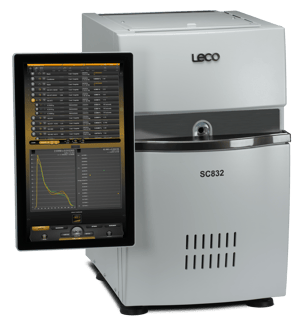Our innovative analytical instrumentation provides users with solutions for a wide range of applications. We want to help your lab succeed, which is why we share examples of the processes, methods of analysis, and results our instruments can obtain in the form of application notes. We want our current and potential customers to feel at ease with our instrumentation in the lab, and our application notes highlight the right instrument for each specific application.
 Our 832 Series brings productivity, precision, and progress to your lab. You’ll get the fast, accurate results you need for your sulfur and/or carbon determination while emphasizing ease-of-use and reliability. Our touch-screen Cornerstone® brand software provides an ergonomic workspace and an autoloader option allows for the seamless automation of up to 100 samples for improved walk-away time. A high-efficiency ceramic furnace brings you lower cost-per-analysis and overall operating costs than even before.
Our 832 Series brings productivity, precision, and progress to your lab. You’ll get the fast, accurate results you need for your sulfur and/or carbon determination while emphasizing ease-of-use and reliability. Our touch-screen Cornerstone® brand software provides an ergonomic workspace and an autoloader option allows for the seamless automation of up to 100 samples for improved walk-away time. A high-efficiency ceramic furnace brings you lower cost-per-analysis and overall operating costs than even before.
Below you can see the benefits of the 832 series in action in our latest application notes:
Sulfur Determination in Rubber
Sulfur content in rubber compounds may be used to estimate the performance properties of materials related to the vulcanization curing process. The vulcanization process for rubber materials leads to the cross linking of the rubber macromolecules and sulfur curing agent. The amount of sulfur present is correlated to the degree of cross linking in the material, which determines the physical properties such as plasticity and elasticity of the rubber materials. The sulfur concentration in a rubber material may also be used to provide insight into the type of curing system used for the material (conventional, efficient, or peroxide for example.
You can read more about the sample preparation, accessories, method parameters, procedure, and results in the application note here.
Sulfur and Carbon Determination in Flour and Plant Tissue
Sulfur is one of the essential macronutrients required for plant growth, aiding the formation of amino acids and proteins, as well as chlorophyll formation. Sulfur deficiencies in a plant can cause chlorosis in new leaf formations, as well as stunted growth and higher plant mortality rates. Measuring sulfur content of the plant tissue can serve as a health check for plants, or in the case of troubleshooting a growth or yield issue in a crop, provide a diagnostic tool for establishing a possible macronutrient deficiency.
Check out the app note here, where the details of sample prep, accessories, procedure, and results are shared.



